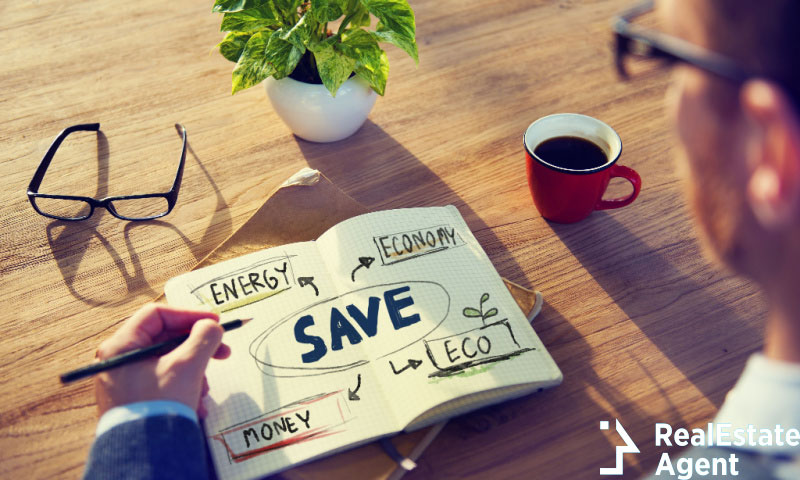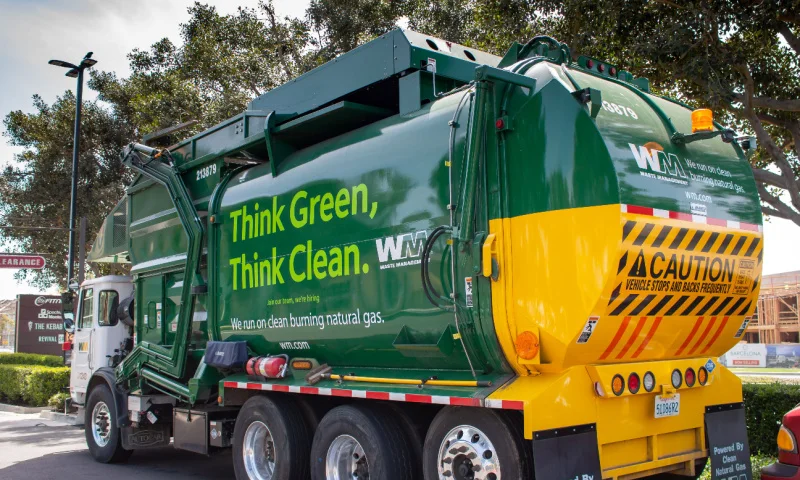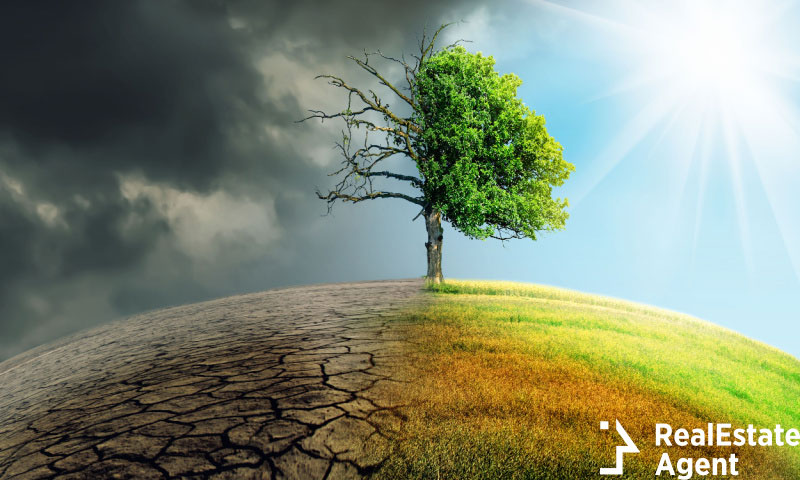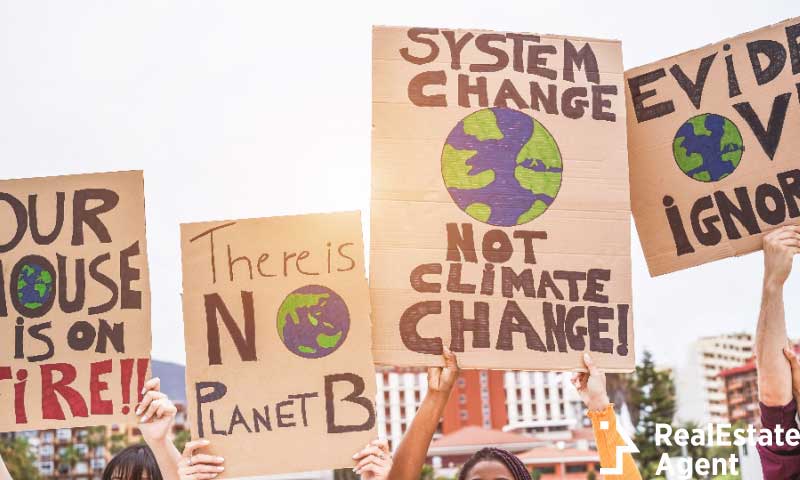With everything that has happened over the last few years, probably the last thing you want to read is an article about energy-saving practices. And who can blame you? We’re all tired of how difficult things are, and after two years of the pandemic, we all deserve a break to set our heads on straight. Unfortunately, the world is in shambles, and we need to push on because if we want to get out of this in one piece, we need to be smart about it.
With one crisis after another, the last thing we needed was a global energy crisis, but it seems like that is what we’ll have to deal with in the upcoming period. We can not say whether it will be months or years, but we can say that it’s time we take matters into our own hands especially considering how others have a way of making our lives harder daily only to increase their profits.
So first things first, we need to find a way to move away from fossil fuels, and we need to learn to limit consumerism as much as possible. This article intends to give you ways to save energy at home by increasing your energy efficiency in ways that won’t only limit resource consumption but decrease your cost of living.
Article Summary:
- How does Energy Efficiency Benefit the Environment?
- Why is it Important to Save Energy for the Environment?
- Ways to Save Energy at Home
- What is Energy Efficiency?
- What is Energy Conservation?
- How Energy Saving Practices Help the Environment?
We live on a planet with finite resources, and those in power fail to implement the measures necessary to decrease our carbon footprint. It isn’t fair that the weight of the carbon footprint is passed along to consumers, but consumers have more power than they might think. By decreasing your energy consumption, their profits will drop, but if you change your energy source, their earnings will go extinct, and so will they.
How does Energy Efficiency Benefit the Environment?
Living in late-stage capitalism makes it so that our modern lifestyle is bad for the environment as we are dependent on consumption. We replace vacuum cleaners more often than clothes, phones can no longer update their software after a year or start lagging, and we have no choice but to buy more things every year. To say that that’s not healthy for the environment is an understatement when you think that everything that we throw away, regardless of the dumpster in which you throw it, will end up in a landfill somewhere.
For years we’ve focused on recycling when that should be the second to last option we consider. But, again, those responsible for manufacturing products rid themselves of any responsibility when the product leaves their store or factory. So yes, we are left worrying about our carbon footprint, and now, with energy costs increasing, the worrying goes beyond the environmental awareness trends sweeping across the nation. Now, it’s personal because we see prices rising every month, which unquestionably affects our cost of living. But how does our electricity use affect the environment exactly, and how does energy efficiency fix that? To answer that question, we need to dive deeper into the issue.
While the combustion of fossil fuels that make it possible for us to drive our cars is a prominent pollutant, our homes’ energy use isn’t something we actively consider when thinking of our impact. Still, the resulting greenhouse gas emissions stack up. Globally, from the 73.2% of greenhouse gas emissions emitted from energy use, 17.5% comes from the energy used in buildings. Of that, residential buildings are responsible for 10.9%, while commercial buildings for 6.6%. In the US, the overall household consumption results in 20% of the country’s greenhouse gas emissions, from which 33.6% comes from our homes alone. However, in housing, 25% comes from our utilities. We can not say those numbers aren’t staggering, but we can lower those numbers through energy efficiency.
When you start breaking it down, you understand that 20% of all the energy consumed by a household comes from lighting, so simply by switching to LED light bulbs, you will see an immediate impact. Some of the measures a household can apply are simple and incredibly effective, and we’ll go over the most important ones later in the article. Before that, however, let’s understand how the environment will benefit from these energy-saving practices.
Why is it Important to Save Energy for the Environment?
Our modern lifestyle requires a lot of energy, and the country’s energy generation needs to cover all of this. We, as consumers, may not have the time to think about where all of this energy comes from as it’s not something that concerns us. It is up to the governments to ensure that everything that needs the energy to work gets the necessary supply and our life goes on as usual. However, when the government does not take the steps required to ensure that we don’t harm the only planet that we have, the source of energy that powers our homes becomes something that we are concerned about. It becomes a problem for the average consumer when our energy bills grow daily or monthly. It becomes an issue when alternative energy sources would give us access to cheaper energy bills with a lower carbon footprint.
Across the US, energy generation comes from thermal power plants fueled with coal and natural gas, nuclear fuel, or biofuels to increase water temperature and generate steam. Steam, in turn, spins turbines to generate electricity that then gets transported through the utility grid into our homes. This process produces greenhouse gas emissions that are a catalyst for climate change.
Most of the electricity generated in the US comes from coal and natural gas. Next, come renewable sources and nuclear. However, if we look at the numbers, 37% of our energy consumption came from petroleum in 2021, 32% from natural gas, 11% from coal, 8% from nuclear, and in the remaining 12% coming from renewable sources, 27% was wind, 19% was hydro, 12% was solar, 2% geothermal, and from the remaining 40%, 17% was wood, 19% biofuels, and 4% biomass. So after quick math, we can see that 80% of the country’s energy comes from dangerous energy sources, without adding nuclear (also bad for the environment), which would take it to 88%. All of those sources generate carbon dioxide emissions, the country’s biggest greenhouse gas producer, or other forms of pollution (in the case of nuclear).
Suppose consumers apply ways to save energy at home by implementing energy efficiency practices. In that case, they will use less electricity, lower their utility bills and cause less greenhouse gas emissions per capita. However, if consumers implement alternative energy sources like solar panels or advocate for a transition towards renewable energy sources from their government officials, they not only advocate for their right to lower energy bills and a livable planet not for future generations but for access to their own peaceful retirements free of climate change worries.
Ways to Save Energy at Home
When we talk about lowering our energy consumption, we may be thinking only about lowering our energy bill, and that’s a viable concern. However, the way in which our energy consumption impacts climate change should also be our concern because while those responsible for this crisis are dumping the responsibility on us, they wash their hands of any accountability. But their lack of accountability does not solve the problem. When you realize how simple energy-saving practices can be, it becomes clear that everyday consumers have much bigger power than all multimillion-dollar companies. Holding them responsible should also be a focus, but until we can see results in systemic change throughout our economy and way of life, we need to do something before it’s too late.
People often hear the terms energy efficiency and energy conservation whenever the subject of energy consumption is brought up. These two terms are not synonymous, but they both work as ways to save energy at home and, if applied, will lower your energy consumption, energy waste, electricity bill, and environmental impact. Energy efficiency (EE) and energy conservation (EC) overlap in many of their applications. They are related and complementary to each other as ways to reduce or avoid energy consumption by the end consumer. However, companies, factories, manufacturers, and every other energy-consuming entity can apply these energy-saving practices. Politicians could enforce them on a federal level for better results; some are implemented through state or federal programs. Still, they could enforce many other things at a federal level if fossil fuel money wouldn’t end up in our elected officials’ pockets.
What is Energy Efficiency?
By far, one of the most promoted ways to save energy at home is through energy efficiency. This energy-saving practice refers to technology that uses less energy to perform the same function. Through energy efficiency, we do not have to change our lifestyle. We just think more efficiently about how we use energy in our homes and daily lives to, in the end, do the same things by using lower amounts of energy. We can achieve this by changing the lightbulbs in our homes from incandescent light bulbs to LED bulbs or, more complicated, by insulating our homes so there is less temperature transference. Energy efficiency requires energy-saving practices, like turning your home into a passive house, demanding investment with a high return in the short to medium term simply by improving things around our home. The following energy-saving practices will increase energy efficiency in our homes.
Replacing light bulbs
As we already mentioned, one of the simplest ways to save energy at home is by replacing traditional incandescent light bulbs that consume excessive amounts of energy with halogen incandescent bulbs, light-emitting diode bulbs (LEDs), or compact fluorescent lights (CFLs) as they use anywhere from 25% to 80% less energy. Stop thinking they are more expensive because they last 3 to 25 times longer than incandescent bulbs, so you are saving money through this switch. Also, you’ll save money on your energy bills.
Seal, Insulate and Weatherize your Home
Any air leaks your home may have is a doorway for heated or cooled air to exit your home. As we can not decrease the temperature outside through our AC or make winters warmer by cranking up our heater, ensuring that your home is sealed shut will reduce temperature transfer and lower your energy bill and energy waste. Make sure that there are no leaks including in your attic and basement. If you also insulate your home, there will be no temperature transference through the walls or roof. A good insulator will retain heat better during winter and keep heat out of your home during the summertime. In warmer climates, the heat resistance doesn’t have to be as high, but you should consider where you live when installing insulation. Consider the walls, attic, basement, crawlspace, and floors as areas that need to be insulated, and you’ll see that your home will be better at keeping in the cool air during summer and warm air during winter. Energy-efficient windows and doors fall in this category as temperature waste from inefficient windows and doors can increase your energy bill and usage by 10% to 25%.
Water Temperature
When it comes to most households, a water heater thermostat doesn’t need to be above 120 degrees, so if you don’t intend to buy an energy-efficient water heater, lower that temperature, insulate it, or simply use less hot water. The water temperature should also be considered for your laundry machine and dishwasher. Most of the energy used by these machines comes from heating the water, so by simply lowering the water temperature, you can save up a lot of money, again, if you don’t want to invest in energy-efficient appliances. As an added benefit, washing clothes in cold or lukewarm water expands the lifespan of clothes as heat damages them.
Energy-efficient Appliances
It goes without saying that replacing your appliances with energy-efficient ones isn’t cheap, but your home appliances are responsible, on average, for 13% of your home’s energy consumption. You should look at two things when purchasing any new appliances: the purchasing cost and the annual operating cost. While energy-efficient appliances come with a higher price tag, they have a 9% to 25% lower operating cost. At the end of the day, while you may pay more upfront, throughout the life of that appliance, you’ll end up saving a lot of money and energy. The most common label for energy-efficient appliances is the ENERGY STAR, a federal guarantee of energy efficiency. Furthermore, ENERGY STAR laundry washers use 25% less electricity and 45% less water.
What is Energy Conservation?
Coming in second place of the most promoted ways to save energy at home, energy conservation is all about using less energy by using your energy-consuming appliances less. It may be as simple as turning off your lights or using programmable appliances. The result is that you end up using your home’s energy-consuming features less. The most appealing characteristic of this energy-saving practice is that anyone can apply it in their homes and on their terms. You don’t have to replace appliances or insulate your home for this. However, the energy-saving practices that help energy efficiency are highly suggested for their significant impact. The best way to go is to apply both of these, as you can use LED lights while also turning them off when you don’t need them. Other energy conservation techniques include the following practices.
Pull the Plug
While this may be slightly uncomfortable, unplugging the electronic devices while you don’t use them will take care of all phantom energy consumed while you don’t even use those devices. Think of your phone charger, air purifier, laptop, tablet, PC, AC and TV, and everything else that does not need to get energy 24/7. A great way to ensure that you won’t have to manually unplug every electronic device you have in your home, seeing as those chords can get damaged or you can pull the plugs out of the wall if you’re not careful, is to replace every plug you have in your home with those that have an on/off switch on them that cuts the power before it even gets to your electronics’ chord. While these may not be as common in the US, the UK has these plugs as standard features meaning that when you no longer use an appliance, you can just turn the electricity support off without having to unplug every electronic device in your home.
Make the Best out of Windows
By now, we should know that natural light is 100% more effective and accurate at lighting our homes than artificial lighting. Women know this. After all, when they do their make-up, natural light makes it easier to use, blend and choose the correct colors for their skin tones because natural light doesn’t come with a hint of blue, yellow, or white that offsets the true colors of the environment. Natural light is also healthier regarding how our bodies react to it. So use your windows in such a way that you can make the most out of the natural light that comes into your home. If you can, stop using blinds whenever you don’t need a dimmer light or when it’s not too hot. Or have curtains that allow the flow of natural light to come into your home. There are also sheets of translucent film that you can cover your windows that won’t dim the light coming from outside but will make it so that your windows are no longer see-through. The best thing about natural light is that it’s free. It adds no cost to your energy bills and does not harm the environment in any way. Unfortunately, when the sun sets, the brightness fades, and we need artificial light for tasks like cooking, cleaning, reading, writing, and working. However, we don’t need light in the evening for many things, so why leave the light on when we don’t need it? Watching a movie is more immersive with the light off than with them on, so turn them off when you don’t need them.
Programmable Appliances
Whether it’s your AC, your thermostat, your washing machine, your dishwasher, or anything else that can be programmable or function remotely, use those features as much as possible. For instance, set your thermostat to function and cool or heat off the home based on how your schedule works. When you’re not at home, there’s no need for a cozy atmosphere in the middle of winter. Also, when you sleep, it is proven that we don’t need the same temperature that makes us comfortable when we’re awake. Turn your AC off on cool summer evenings and open the windows, allowing the light breeze or wind to cool off your home. Set your outdoor lights on a timer, so they turn off when there is light out, or have them be motion sensitive to only be used when necessary. An excellent option for programmable appliances or smart appliances is the LoRaWAN system, which is easy to work with and uses low amounts of energy. Your washer can run on the shortest cycle, and you can skip the dryer and just hang your clothes out to dry, either in the backyard in the summer or on a hanger inside when it’s cold. Fun fact, dryers are only standard features in the US. The rest of the world hangs their clothes to dry, and in the summer, they dry in about two hours or less, depending on the heat.
How Energy Saving Practices Help the Environment?
If you apply these energy-saving practices alone, you will consume less energy than you would otherwise, taking less electricity from the grid. This will, in turn, lower the amount of energy your utility needs to produce in order to supply end consumers with energy, effectively reducing greenhouse gas emissions and lowering the carbon footprint overall.
The environmental benefits of these energy-saving practices will lower pollution and CO2 in the atmosphere. If these practices and others are implemented on a large scale, we would see, in time, a decrease in heat wave intensity, hurricanes, droughts, rising water levels, air quality, winter storms, wildfires, and other natural disasters that are directly linked to climate change.
The two energy-saving practices we went into detail about in this article are just two that we can do on a consumer level with limited expenses from the consumer. However, suppose you want to push further into this issue. In that case, you could look at renewable energy sources, pushing for more wind, water, and solar energy, as well as other innovative technologies to generate energy out of the natural cycles of plants. Some renewable energy sources are available for consumers, like solar roofs, solar panels, and electric vehicles (if powered by solar, wind, geothermal or hydro energy – otherwise, it just pollutes less but is not carbon neutral). However, the best way to go about these alternative renewable energy sources (which are cheaper than fossil fuel right now) is to write to your elected officials and push them to implement these changes, elect officials that have these within their policies, and hold them responsible for the impact fossil fuel has on prices, cost of living, and the environment.
Our planet can not ask for these practices, can not speak for itself, and can not push for these changes. What it can do is show us how much we are harming it through natural disasters, which are its ways of trying to fix a problem that we have created. The last thing we should want is for the planet’s immunity systems to be pushed into a corner and respond by getting a fever. How many more heatwaves will it take for us to actually start taking care of it like we do when we have a fever?
Conclusion
For decades, we have been taught that our lives need the highest amount of comfort and that we can truly be happy only through reaching that level of comfort. However, happiness comes from a healthy life, a cheap life, and a life where you have all the things you need. The truth is that what we need is entirely different from what we want, and we have been trained to value what we want more than what we need. For those that like conspiracies, this is a conspiracy that actually came true, so if you want to understand how we were shaped into a society of consumerism for the benefit of consumerism and the pockets of those in control, look into “American Prosperity: Its Causes and Consequences”, where Paul M. Mazur wrote “we must shift America from a needs to a desires culture … People must be trained to desire, to want new things, even before the old have been entirely consumed. Man’s desire must overshadow his needs.” So by focusing on the aforementioned ways to save energy at home, you can take back that control and choose how much energy you consume. Because the truth is, you don’t need nearly as much as you consume.
So now that we understand how we can apply these energy-saving practices, do you intend to use them? After all, if it comes down to your pocket and finances, it’s personal. The added benefit of these practices is that the environment will thank us in the long run by continuing to provide a liveable planet for all of us. Let us know in the comments section below which energy-saving practices you already use and which ones you will implement in the future, if any. Like & Share this article with friends and family because you’re probably not the only one struggling with the rising cost of living and energy bills.





















